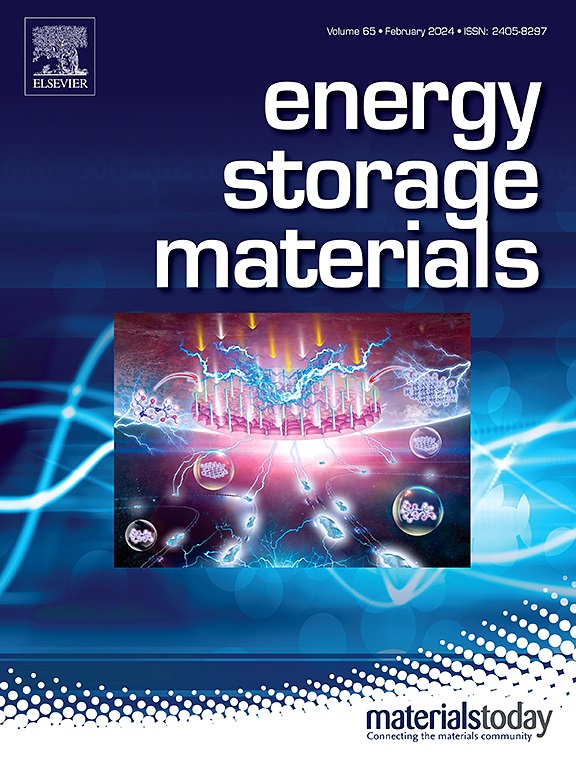Chemical disorder engineering enables high-voltage stable oxide cathodes over –20–25 ℃ in sodium-ion batteries
IF 18.9
1区 材料科学
Q1 CHEMISTRY, PHYSICAL
引用次数: 0
Abstract
O3-type Mn-Fe-Ni layer oxide cathodes show great commercialization potential due to their high capacities and simple synthesis. Nevertheless, simultaneously achieving high energy density and good cycling stability remains challenging. Herein, we introduce a chemical disordering strategy to create O3-Na0.83Mn0.35Fe0.15Ni0.15Cu0.10Co0.20Sn0.05O2 (MFNCCS) cathode. The chemical disordering strategy was implemented through selective multi-transition metal substitution and quenching during synthesis. The former promotes a high entropy effect, while the latter is beneficial to increasing the quenching disorder degree, functioning a synergy effect in suppressing irreversible multi-phase transitions and promoting cycling stability. As a result, the MFNCCS cathode can retain 91.6 % (∼103.3 mAh g–1) of its capacity after 500 cycles at 200 mA g–1, with an energy density of 285.3 Wh kg⁻1 at the 500th cycle, which is superior to previously reported state-of-the-art layered oxide cathodes in the voltage range of 2.0–4.3 V. Besides, it achieves stable cycling within 2.0–4.3 V over temperature range of –20 to 25 °C. This work offers new insights for high-voltage stable layered cathodes in wide-temperature SIBs.

求助全文
约1分钟内获得全文
求助全文
来源期刊

Energy Storage Materials
Materials Science-General Materials Science
CiteScore
33.00
自引率
5.90%
发文量
652
审稿时长
27 days
期刊介绍:
Energy Storage Materials is a global interdisciplinary journal dedicated to sharing scientific and technological advancements in materials and devices for advanced energy storage and related energy conversion, such as in metal-O2 batteries. The journal features comprehensive research articles, including full papers and short communications, as well as authoritative feature articles and reviews by leading experts in the field.
Energy Storage Materials covers a wide range of topics, including the synthesis, fabrication, structure, properties, performance, and technological applications of energy storage materials. Additionally, the journal explores strategies, policies, and developments in the field of energy storage materials and devices for sustainable energy.
Published papers are selected based on their scientific and technological significance, their ability to provide valuable new knowledge, and their relevance to the international research community.
 求助内容:
求助内容: 应助结果提醒方式:
应助结果提醒方式:


